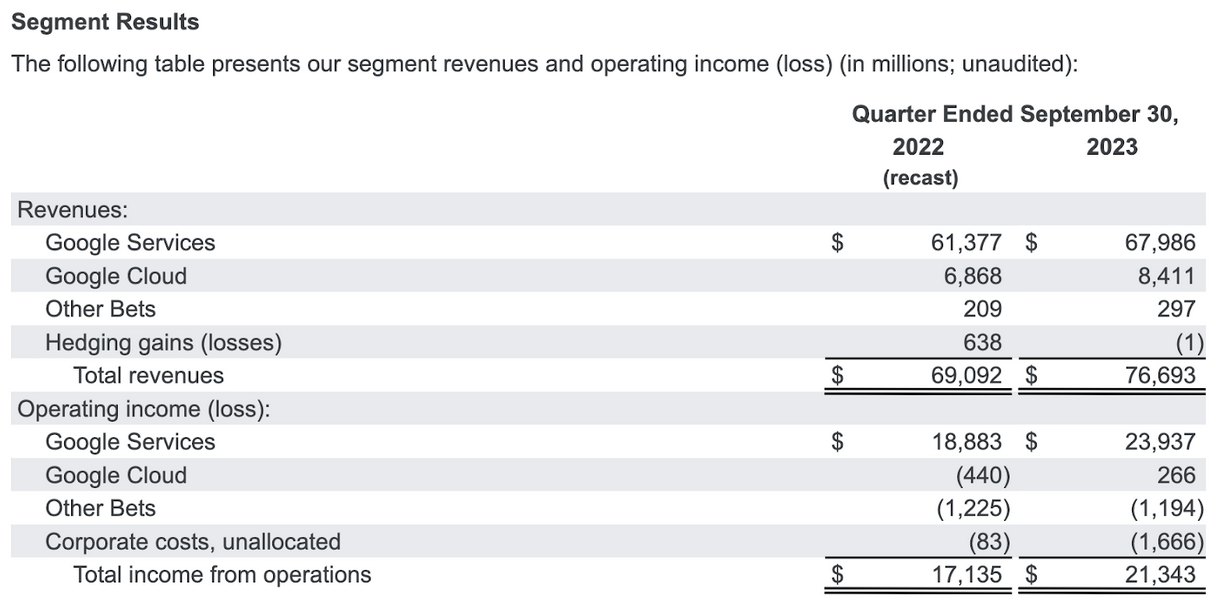 VideoHerd
VideoHerd
Google's Revenue Shapes Your YouTube Marketing
Category: YouTube Content Strategy
Corporate giants like Google don't just emerge out of the blue. A relentless focus on profit and shareholder value drives their rise. These priorities, in turn, subtly influence their design, algorithms, and business models.
For marketers and content creators, understanding this dance between profit and platform changes is crucial. Why? Because by analyzing these financial drivers, we can translate them into content that fits into their forward-looking plans and rise higher in YouTube's intricate algorithms.
In this guide, we'll talk about:
Where Google Makes Its Money
Breaking Down YouTube's Revenue Streams
How Google's Revenue Streams Should Shape Your YouTube Marketing Strategy in 2024
Where Google Makes Its Money - Q3 2023 Earnings Report

On Tuesday, October 24th, 2023, Alphabet, the parent company of YouTube, released its Q3 earnings report. Google makes a majority of its revenue from:
Google Services:
YouTube, Google Play Store, Google Ads
Google Cloud:
Cloud services like: Google Drive, GCP, Firebase, etc.
Other Bets:
Other moonshots Google's investing in: Nest, Stadia, Waymo, Intrinsic (YT AI, and Robotics Division)
When compare the Q3 2022 to Q3 2023 earnings reports, Google showcased a healthy 11% growth in revenue from Google Services and a significant 22.44% rise in Google Cloud revenue.

But how did YouTube contribute to this stellar revenue performance? Let's take a look and find out.
Where YouTube Makes Its Money: YouTube Revenue Breakdown in 2023

YouTube's revenue isn't solely derived from ads. In 2023, their diverse revenue streams included:
Channel Memberships
YouTube Premium, which has seen extensive global advertising lately
SuperChats, where YouTube gains a 30% cut from donations sent to creators
Advertising Revenue: In-video, banner ads, unskippable pre-roll ads, and the coveted homepage banner ad.
Delving into Alphabet's investor relations site reveals that Google Services raked in a whopping USD 67.9 billion in revenue. A closer look at the breakdown shows that YouTube Ad Revenue alone accounted for $7.9 billion, marking a 12% growth from last quarter's report. Given YouTube's recent initiatives, like advertising on YouTube Shorts and efforts against ad blockers, we foresee a further rise in their revenue.
Within Google Services, revenue also comes from advertising, app sales, in-app purchases, hardware, and subscription-based products like YouTube Premium and YouTube TV. Considering these varied revenue streams, it may be challenging to determine the best focus for content on YouTube. However, our next section will guide you on where to invest your efforts to reap the highest return on your YouTube Marketing content.
How to Leverage Google's YouTube Strategy in 2024 for Your Content
Despite its largely positive results, the market had some reservations about Google's Q3 performance, perhaps influenced by the overshadowing success of Microsoft's OpenAI over Google's AI ventures.
In response, we expect YouTube teams to gear up to implement many changes in their shining star, Google Services, in the upcoming quarter to stay competitive. Within the YouTube sphere, here's what we predict you should prioritize so that you can strategically align your content to Google's revenue goals:
Lengthy, Engaging Content: Given that ad revenue is pivotal to YouTube and Alphabet's overall earnings, it's likely that YouTube will embed more ads into longer videos. Prioritizing extended content over shorter to medium-length videos might become the move, as they provide more opportunities for ad placements and, consequently, increased revenue.
YouTube Shorts: With the introduction of advertising revenue streams for Shorts, creators have a fresh avenue for monetization. Given its format, Shorts is an ideal platform for bite-sized, viral content, and YouTube's push suggests its potential to attract a younger, mobile-first audience and create new ad formats.
Channel Memberships: As a direct way to monetize content and foster a dedicated viewer community, YouTube will further emphasize channel memberships. This provides a more stable revenue stream for creators, divorced from the volatility of ad revenue.
Effective Use of YouTube Chapters: Breaking down longer videos into chapters can improve user engagement, making viewers more likely to stick around. This means they'll be exposed to more ads, benefiting both creators and YouTube. As YouTube strives for longer viewer retention times, effective chaptering becomes a subtle yet impactful tool for creators.
Conclusion
To maximize the potential of your business's YouTube presence in this evolving landscape, reach out to our experts today for personalized YouTube channel consulting.
Learn more:

